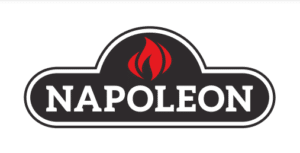There are several key elements to be thinking about when you’re installing a fireplace in your home, and one of the most important for multiple reasons is the size you’re going for. Fireplaces come in a range of different sizes, and which you choose could depend no a number of different specific variables.
At Comfort Solutions Fireplace, we’re happy to offer a wide variety of both traditional and contemporary fireplaces, all in varying styles and sizes. We’ll assist you with every part of your selection process for a new fireplace, including discussing your size options and which is likely best for your budget and needs. In this two-part blog series, we’ll discuss the key factors that should influence your fireplace size decision, plus how to consider each of them.
Any Previous Fireplace Space
If your home already has an existing fireplace, then the size of that space could have a direct bearing on your new fireplace choices. Of course, you’ll want to make sure whatever option you go for will fit in the space that’s already there, so it’s important to keep this factor in mind when looking at sizes.
For instance, if your home previous contained a wood fireplace but you wanted to upgrade to a more modern fuel source, inserts come in a variety of sizes and can be tailored to fit an existing space. This could be especially helpful if you wanted to a large upgrade on the new fireplace but didn’t want to make structural changes to the home itself.
BTUs and Heating Capacity
For any fireplace, the BTUs and heating capacity can vary drastically depending on the size. If you have a large space to heat with your new fireplace, then you’ll certainly need something that has a high output – in other words, a larger model.
On the flip side, if you don’t have very much area to warm up in your home or are simply looking for something that provides a beautiful ambiance but won’t be used to heat the whole house, then you could opt for a smaller model.
Room Size and Length of Walls
Another factor to consider when it comes to the size of your new fireplace is the overall dimensions of the room as well as any length of walls that could be affected by its installation. This means taking measurements for all these factors and keeping them in mind when you’re browsing different fireplaces.
For example, if you have a long wall where you want to place the fireplace, you may opt for a larger model that spans its length. On the other hand, if you have a smaller room with limited space then something smaller could be more suitable.
In part two of our series, we’ll go over how to consider ventilation and proper installation when it comes to choosing the right size fireplace for your home. Stay tuned!
And if you’re interested in getting a new fireplace installed, contact us today at Comfort Solutions Fireplace to get started. We look forward to helping you get the perfect size for your needs and budget!

